What do you get when a fitness advocate and a rugby legend approach childbirth like a team sport? One deep lunge later, a baby is born
Water birth often gets media attention in Western countries, but who would’ve thought that after it was temporarily banned in Malaysia in 2016, it would slowly gain traction among soon-to-be parents looking for a more natural and gentle way to give birth? As of now, water birth isn’t offered in government hospitals and is only available at Pantai Hospital Kuala Lumpur (PHKL), making it a pretty niche choice, but one that’s clearly gaining interest.
We spoke to fitness and wellness coach, content creator, and emcee Linora Low and her husband, Dinesvaran “Duke” Krishnan, about their journey with water birth—from the decision-making process and unexpected turns during labour to ultimately delivering their baby girl Aivory Lin Dinesvaran in a deep lunge, believe it or not, which is perfectly fitting for a fitness and health advocate!
Linora is no stranger to strength and breathwork. As a fitness influencer and emcee, she’s built a career around physical discipline and wellness, all of which came into play during what she calls the most powerful ‘rep’ of her life: giving birth. Her other half and unwavering support, Duke Krishnan, is a Malaysian rugby legend with a career that’s spanned Japan and the U.S. He also leads an athletic coaching platform that champions the “Live Like An Athlete” mindset.
When it came to bringing their daughter into the world, that same mindset became something far more intimate. Together they approached pregnancy and labour not just with strength and strategy, but with the kind of unity and trust you’d expect from two people deeply in sync.
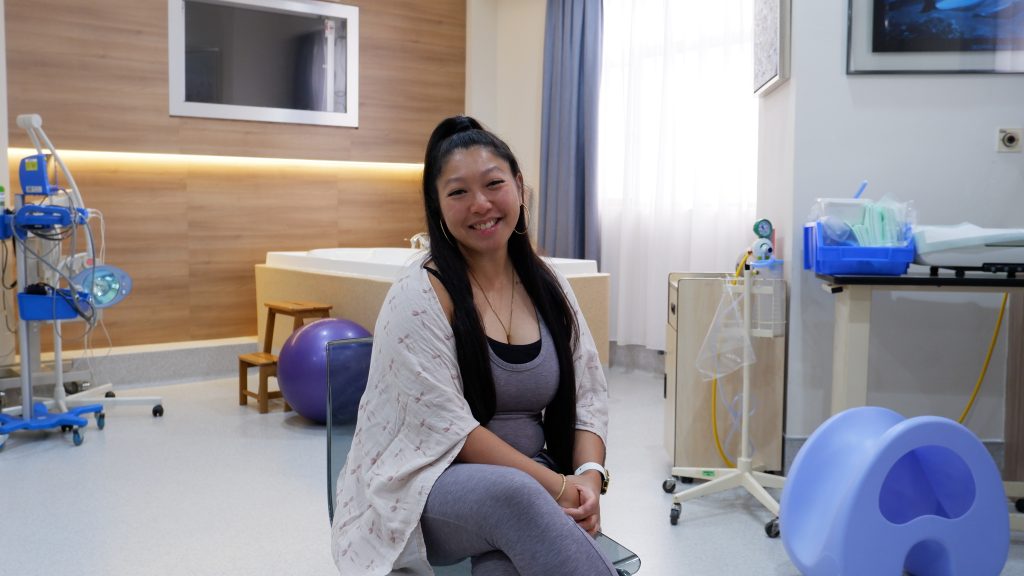
1Twenty80: What inspired you to choose water birth over other birthing options?
Linora Low: I’ve seen it before in movies, but I was more keen when a friend of mine, who is also a doctor, told me they actually do water birth here, and that it’s a very natural and calming process. So I was like, “Oh okay, that definitely sounds interesting.” It caught my attention, and then I started reading more about it. I found out that it can come with benefits like less medical intervention and a lower chance of tearing down there. That made me really intrigued and more open to trying it. Only then did I mention it to him.
Duke Krishnan: Yes we’d only ever seen it in movies, and no one we knew had actually shared their experience. But when I was living in Japan, I discovered that sitting in warm water does help to relax your body. So when she mentioned water birth, it actually made sense. Sitting in water might calm you more.
After that, I started to look into how the whole process works. And she was 100% set on it. She’d done all the research, felt confident about it, and was more comfortable with the idea of being in water instead of lying on a bed. So together, we decided, yes, we’ll go with water birth.
Linora Low: Back when he was playing pro rugby in Japan, we used to go down to the pool at our condo for recovery. He would always say how being in water helps with mobility, which is super important when you’re giving birth. You want to stay mobile so everything down there opens up and the baby can come out. He said, “You’ll feel more flexible and mobile in water,” and that totally made sense to me. So that added to why water birth felt like the right choice.
Duke Krishnan: We’re both really into sports and training, so we actually looked at water birth from more of an athlete’s perspective. Water helps reduce body weight, relaxes muscles, and it all made more sense to us than just lying on a bed. That’s how we came to our decision.
Linora Low: Actually, the whole thing kind of felt like a sports event. Giving birth was the final game.
Duke Krishnan: Yeah, it became more like a strategy to play.
Linora Low: We even turned our trimesters into matches.
Duke Krishnan: Yeah, we called them quarterfinals, semifinals, and finals.
Linora Low: Especially the last three months—that was our semi to final stretch.
Duke Krishnan: It was like a whole league.
Linora Low: And that helped ease the anxiety because it should be a fun process, the whole pregnancy.
1Twenty80: So Linora was clearly all in, but what about you? What took you from 90% to fully on board?
Duke Krishnan: One is that I know what water can do to your body. Secondly, I wanted her to be comfortable during pregnancy and especially while giving birth. I’m there to support her but she’s the one who is 100% in the game.
Like I said, we take this from an athlete’s perspective. She’s the one playing and I’m more like the coach. So I need to follow her mindset. That’s what helps a player stay focused. I made it clear: all the decisions come from her. I always believe that the final call should be hers. So she made the choice, and I’m there for support.
1Twenty80: What were the resources that have helped you research after making the decision?
Linora Low: I wish I could tell you that I went to a full blown website and I had all that info. I’ll be honest, most of it came from social media, mainly Instagram. There are so many resources now from mums who’ve become personal trainers and created their own programmes, and lots of doulas sharing too.
So that’s where I found information on what roughly happens during a water birth. I would say the real research came from whatever I could read or watch, which were mostly videos and posts
There was one particular video I remember, where a mother gave birth in water. Before that, all I knew was you go into the water and just chill out there. But I didn’t know when exactly you’re supposed to go in—like, are you there the whole time? Because you don’t know how long labour will last. That part was still very foggy.
We did ask doctors as well, questions like, “What exactly is the process?” And I asked friends too. Nothing online really gave a clear explanation of what actually happens during a water birth. So that’s why I kind of just went with the flow of the game.
The most I did was research on how I should move in the water. That was, I suppose, the most important part. I did a lot of mobility work to make sure I knew how to open up the perineal muscles. And then later, we moved on to searching for mental prep. So the water birth prep started more with “what can I do physically?” Then after that, it became more about the mindset.
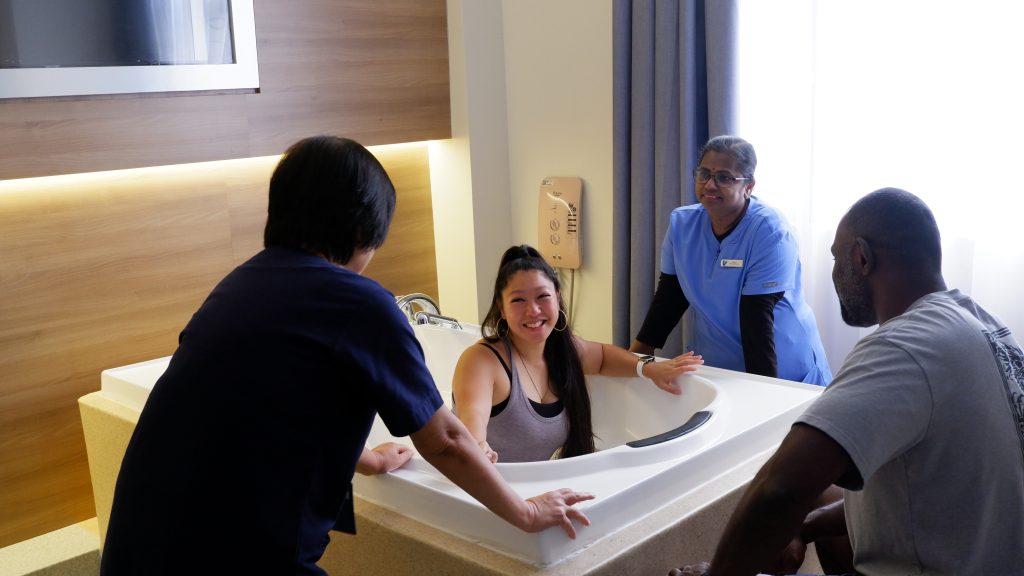
1Twenty80: What did that mental prep look like for you, and how did you both support each other through it?
Duke Krishnan: We met a doula who helped us prepare mentally. When you start talking about pregnancy and labour, a lot of people tend to share horror stories—and that puts a lot of pressure on the mum. But once we met the doula, she cleared all of that up. All the anticipation of something bad happening—she broke that down. She told us, “Whatever people tell you, that’s their story. It’s not going to happen to you.” And that really switched our mindset. We started telling ourselves, “That’s their story. It’s not going to happen to us.”
Before that, we were under a lot of pressure. It was our first baby and we were wondering how things were going to go. Hearing all these stories made us think something would go wrong. But after meeting the doula, we cleared our minds. From then on, the journey became much smoother for both of us.
Linora Low: I’d say we actually took that step a little bit late. Usually, people go for classes and things like that earlier. I wanted to, but I didn’t find one in time—or I missed one on Zoom. I’m not sure how much it would’ve helped with understanding the whole process, but when we finally went to see the doula—her name is Lisa—she really walked us through what to expect.
She helped us understand the process of pregnancy, what happens in the body, the changes in hormones and the purpose of all those changes. The amazing thing was how she showed us that everything happening has a purpose. That’s when the natural aspect of water birth really started to make sense.
She also helped us see how beautiful the whole pregnancy journey really is. I mean, from two cells that you can’t even see with the naked eye, to this human being (points to Aivory). It really gave us perspective.
She helped us understand that the pain has a purpose—and that was a big one. She even gave us homework! One of the most crucial things we did was come up with a mantra I could use while I was in the water, which was:
“God has designed me for this and pain has purpose.”
That was my mantra, and I think it’s actually very beautiful.
Duke Krishnan: It is, it is. That mantra really helped her. Every time she went through a contraction, she could empower herself—and the baby too. We believed that pain has a purpose. You go through the pain to transform into a mother. So every time she faced the pain, she got stronger.
In the last 20 minutes, it was like something switched. Some kind of motherly instinct just took over and she said that she wasn’t feeling any pain, she just focused on getting the baby out safely. I think everything we did—the mantra, the mindset prep—it all led to that.
Linora Low: Like I said, as a coach, he’d remind me to say the mantra 10 times every morning.
Duke Krishnan: Yeah, we have to have our daily affirmations.
Linora Low: You really need that kind of support. That’s why this whole thing is a team effort. It can’t just be the mum doing it alone. It’s teamwork, even with the baby. She’s the one deciding, “I’m ready, I want to come out. But can you handle it? Can I come out now?”
So again, it’s all about teamwork. Saying that mantra, I believe, also helped the baby. Whatever thought process the mum is having, it’ll travel to the baby too. It helps to calm the baby. I’m not entirely sure how it works, but I like to believe that she’s a calm baby because of that.
1Twenty80: Linora had a mantra that helped her stay strong and empowered. As her coach and support system, did you have a personal mantra or mindset that helped you stay strong for her?
Duke Krishnan: I didn’t come up with a specific mantra or anything like that. But what I kept telling myself was: everything is about her. So whatever it is, I focused on how I could support her emotionally and just be there for her. I cleared up my schedule so I could be fully present. That way, I could support her in any way she needed.
Like we mentioned earlier, I saw myself as a coach and she’s the one going out to play. So her preparation was the most important part. For me, it was always about what she was going through and how I could help her through it.
I think a lot of husbands should experience this, because it really gives you a smoother transition into parenthood when both of you are on the same journey. If you leave everything to your wife, I feel like the husband ends up left behind. He won’t really know what she went through or how to support her when it matters most. I’m grateful I got to be there with her the whole way, from the start right until the baby came. And now, we’re doing this together.
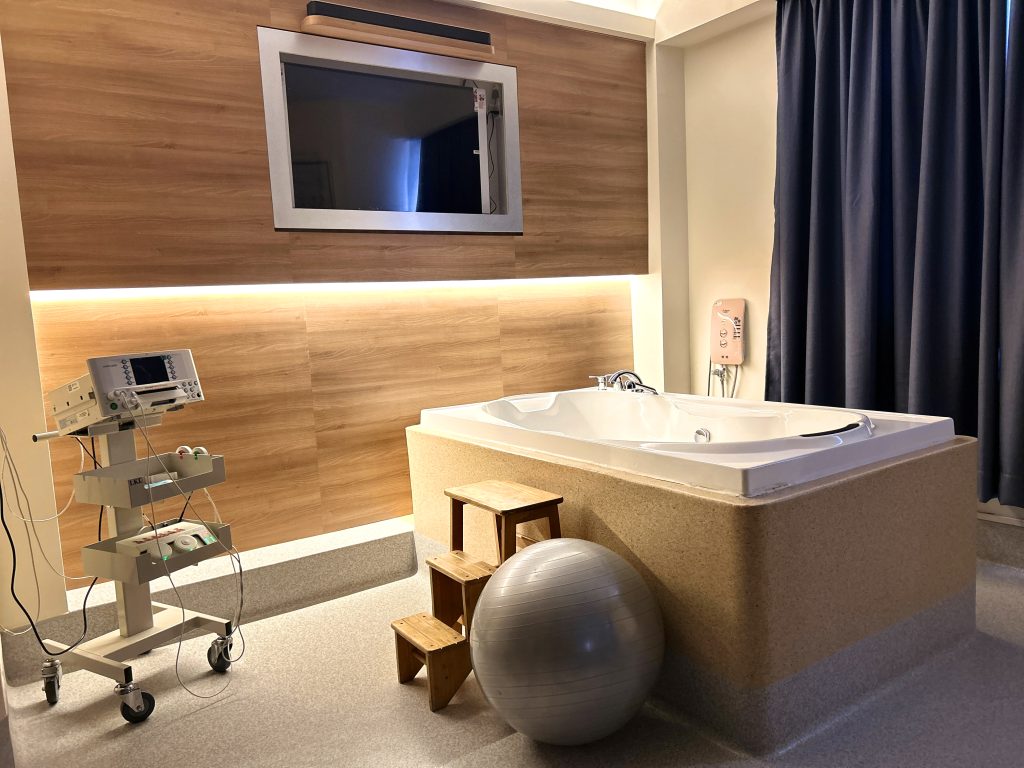
1Twenty80: Can you share what the whole water birth experience was like, from start to finish?
Linora Low: Let’s start from when we were out of the water. That’s when things were intense. Oh it was definitely uncomfortable. When they finally told me I could go into the water, I was so relieved. That’s the thing—we didn’t know when I could go in. We later found out that you can only enter the water once you’re 4cm dilated. Thankfully, when we got there, I was already 5cm, so I went straight into the water.
That wave of relief was incredible. The water, plus the midwives—who were amazing—helped so much. They kept pouring water over me, which was really soothing. It acted as a distraction, and because it was warm, it made everything feel more comfortable. Again, not pain-free, but much more tolerable. I was told I could use a TENS machine or even have laughing gas. I was actually hoping to try the laughing gas, but I never got around to it. I didn’t even think about it once contractions became frequent. The water was enough, and I just wanted to stay there.
There was a period (you can actually see this on Instagram) where I was leaning over and Duke was right there with me. We stayed in that position for three hours, and then I came out of the water for a break. A lot of people think you stay in the water the whole time, but you can actually come out. That’s the good thing: you’re allowed to move freely, whenever and wherever you please. And that’s important, because moving around helps reduce the pain. Just to clarify though, water birth doesn’t take away the pain—the pain still has purpose—but it becomes very tolerable in water.
Later on, when I was more dilated, things got really intense. I asked to go back into the water again. The last 20 minutes were super quick. That’s when she came out. I was originally planning to give birth on all fours, but that changed based on how my body felt and the baby’s position.
I was kind of still on all fours—my right hand was on the side, feet at the bottom—but because the water level was a bit higher than expected, they told me to lower my bum into a more squat-like position so the baby could come out properly in the water. That didn’t quite work, so I shifted into a full lunge instead. That helped me open up more, and she came out. I didn’t expect to be in that position, but it worked.
1Twenty80: Giving birth in a lunge—that’s something else! Did you attend any classes that taught different birthing positions, or was that more instinctive on the day itself?
Linora Low: Nope. Just the doula. Just the mental. For me, physically, I just made sure that I was very mobile. So all the exercises I did had to do with mobility work, opening up, and most of all, relaxing the perineum muscles. They say you should do kegels to strengthen it, but at this point, no. You don’t want to strengthen that. You want to relax it.
Duke Krishnan: The lunges position—I think we had actually planned that you wanted to do all fours. And this is the way I wanted her to give birth, because she didn’t want to give birth lying down. So I said, “OK, if the doctor tells you to turn around, we’ll say, “No, this is the position we want to go with. Let the baby out this way.”” And we agreed on the game plan.
So we were going through it and she kept saying, “I got this, I got this.” Even in the last 20 minutes, she was still repeating it. Then, out of nowhere, she shifted from her original position into lunges. I looked at her and asked, “What are you doing?” The midwives, the doctor, and I were all wondering what she was doing—but she just kept going, “I got this!” And then, in 20 minutes, she pushed the baby out. That was the second stage. Baby’s out. She lifted the baby up and settled down. And I just thought, This woman is a champion.
Linora Low: He was a champion supporter. Champion support.
Duke Krishnan: I think that was mother instinct right there, you know. It was quite a surprise for me. The next day I went around telling my friends, “You won’t believe what my wife did!” And they’ll all be like, “Really?!”
1Twenty80: Were there any complications during or after?
Linora Low:Thank God—after? No, there was none whatsoever. There was only a minor tear, but other than that, it went pretty much according to the birth plan I had in mind. Fun part was, Daddy got to cut the cord.
1Twenty80: How was that? How did you feel?
Duke Krishnan: I thought it would be hard to cut, because some of my friends said it’s very rubbery. But I think the scissors were really, really sharp, so when the doctor told me to cut it, I just did.
I was surprised when I saw the placenta come out—it’s as big as the baby. I was like, whoa.
Linora Low: No one took a photo, so I don’t even know how big it really was. I never saw it. I’m just like, “So how big was it?” And when he tells me it’s this big, I’m like, “It can’t be that big!”
We sent the placenta in an ice box. I got it made into capsules for consumption. Originally, we were thinking stem cells… then I was like, “Ah, never mind. I’ll just eat it.”
1Twenty80: Who was in the room with you during your birth? Was it just your husband, or did you have support from a doula or midwife too?
Linora Low: Oh, there were no doulas. Just the midwives.
Duke Krishnan: Midwives from the hospital, and us.
Linora Low: The doctor only came in towards the end.
Duke Krishnan: Yeah, just to be on standby in case of any emergency. The midwife typically leads the process, with the doctor on standby nearby in case any complications arise. The midwife was very reassuring and kept us informed at every stage. Dr Paul was kept updated throughout the labour and stepped in when it mattered most—right when the baby was ready to be delivered.
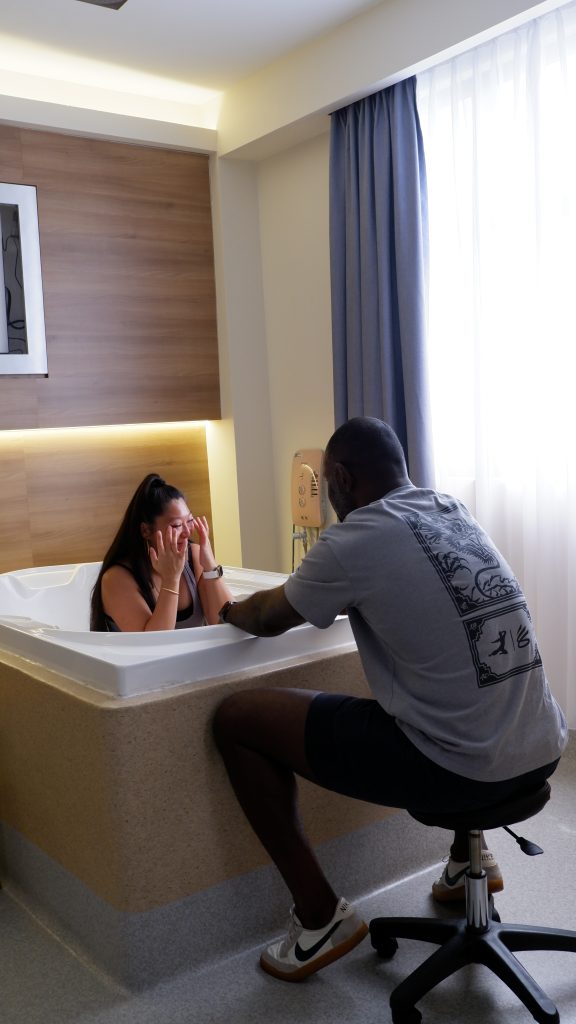
1Twenty80: How important was it for you to have your husband by your side throughout the birth?
Linora Low: There’s one part where I really needed him, and I honestly think if he wasn’t there, I wouldn’t have been able to tahan that long. He was a champ. Because altogether it was 11 hours, and he was with me the entire time, holding my hand, rubbing my back… we basically had a long staring contest, except for when I stepped out to take a break.
It was so important that he was there, along with the midwives. At least I got to come out, breathe, rest, eat—because you should be eating while you’re giving birth. It’s a humongous workout. A full marathon. If he hadn’t persuaded me, I wouldn’t have come out of the water when the midwives asked. In my head I was like, “No, I just want to stay here.” But he said, “Come out and eat,” and only then did I give in.
Duke Krishnan: Yeah, the midwives were saying she’d been in the water too long and hadn’t eaten anything. They brought in some bread and Milo. She came out, had some Milo, and went back into the water. That helped refresh her.
Linora Low: I’d already told him my brain might not be working at that point, so I said, “You’re going to have to make decisions.” Where I could, I would. But I gave him full liberty if I needed a painkiller or something, he could decide. Thankfully, we didn’t need any of that. The water was enough.
1Twenty80: We know the last 20 minutes were unexpected, but aside from that, was there anything else that caught you off guard or that you didn’t anticipate?
Duke Krishnan: Most of what happened during labour went as expected. But at the start, when she reached 4 cm and could go into the water, we weren’t so clear about it. So that wasn’t exactly surprising, but it was something we had to figure out as we went. We just had to adjust and go, “Okay, this is how we’re going to do it now.”
Other than that, everything went as expected—until those last 20 minutes.
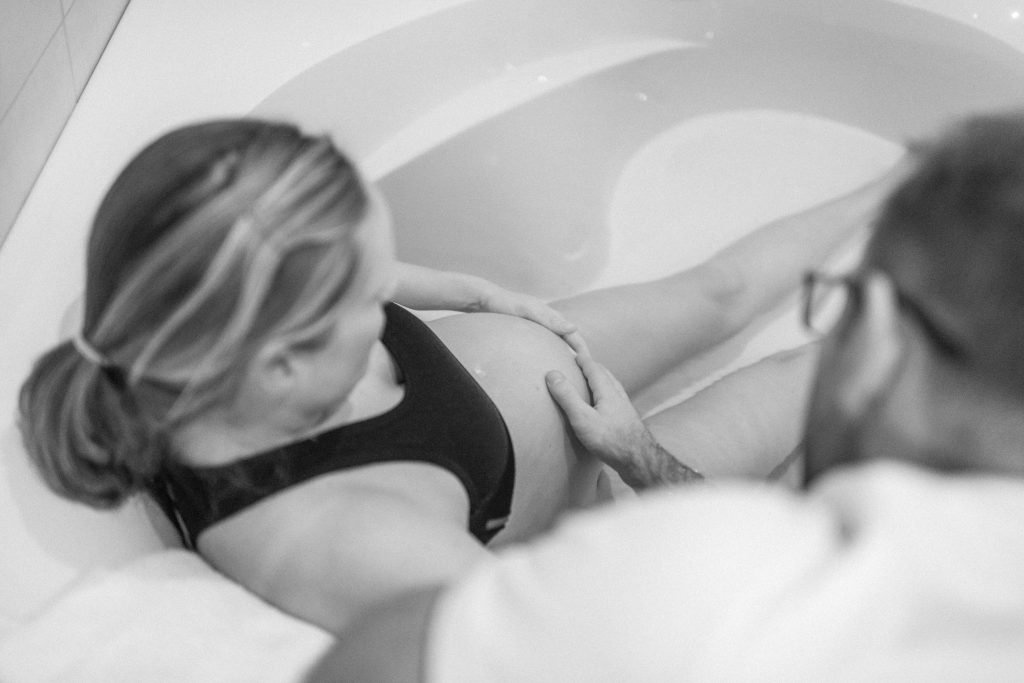
1Twenty80: What advice would you give to couples out there considering water birth?
Duke Krishnan: There are so many horror stories out there, like I told you, because in Malaysia, water birth is not a very popular process. But I think couples should experience it for themselves and build the confidence to do it. We really enjoyed the process of water birth. I don’t know how it would’ve been on the bed. I think I would’ve been more worried about her because in the first stage, the way she went through the pain… I couldn’t do anything. I could just hold her hand and be there. When she got into the water, I saw how relieved she was.
So I would say: experience it, and don’t worry about the horror stories. I think water birth is one of the smoothest ways to give birth. She’s already saying, for the second one, she wants to do water birth again.
Linora Low: For soon-to-be parents considering any kind of birth—whether it’s water birth, bed birth, or even C-section—I’d say the most important thing is that the mom needs to be confident. That’s number one.
With water birth, it really is such an intimate process. I could move around a lot more, and that movement helped me tolerate the pain better. Like he said, the focus in water is different. On the bed, yes, you can still look at your husband, but I don’t know… when I was having contractions on the bed, I was more likely to close my eyes and just grip the handles. But in the water, I could position myself in a way that was comfortable for me. My husband was right in front of me, so we were having that staring contest—which meant I had the person I love right there, looking over me. At the same time, my body could do something else to alleviate the pain.
Sr Siaw (one of the midwives) told me to sway a little every time a contraction came, and it helped so much. It wasn’t just about breathing—it was the breathing and the swaying that made it more manageable. So when the peak hit, I could tell it was coming, but it wasn’t like aaargh! Because from the stories I hear—including from my mum—they kind of just held on to the pain and held their breath.
So I’d say water birth is a great option if you want something natural, intimate, and a big bonding experience with your partner. Just make sure to do your research, and most importantly, build your confidence.
1Twenty80: Would you do a water birth again in the future?
Linora Low: Water birth would definitely be my choice again. Yeah, definitely. The position that I’ll end in, I don’t know. It could be a squat…
Duke Krishnan: …it could be the Wonder Woman pose.
*Both laugh*
Duke Krishnan: I also would recommend water birth again. First, we’re already familiar with the process. And second, she didn’t need any medication or painkillers because the water took away at least 25% of the pain. It also supported her body weight, so she could move around and change positions during contractions. All of that really helped. So yes, I’d definitely recommend her to go through water birth again.
Join our 1Twenty80 Broadcast Channel today! Be the first to receive interview updates, behind-the-scenes snippets and happenings in Malaysia’s health scene!












